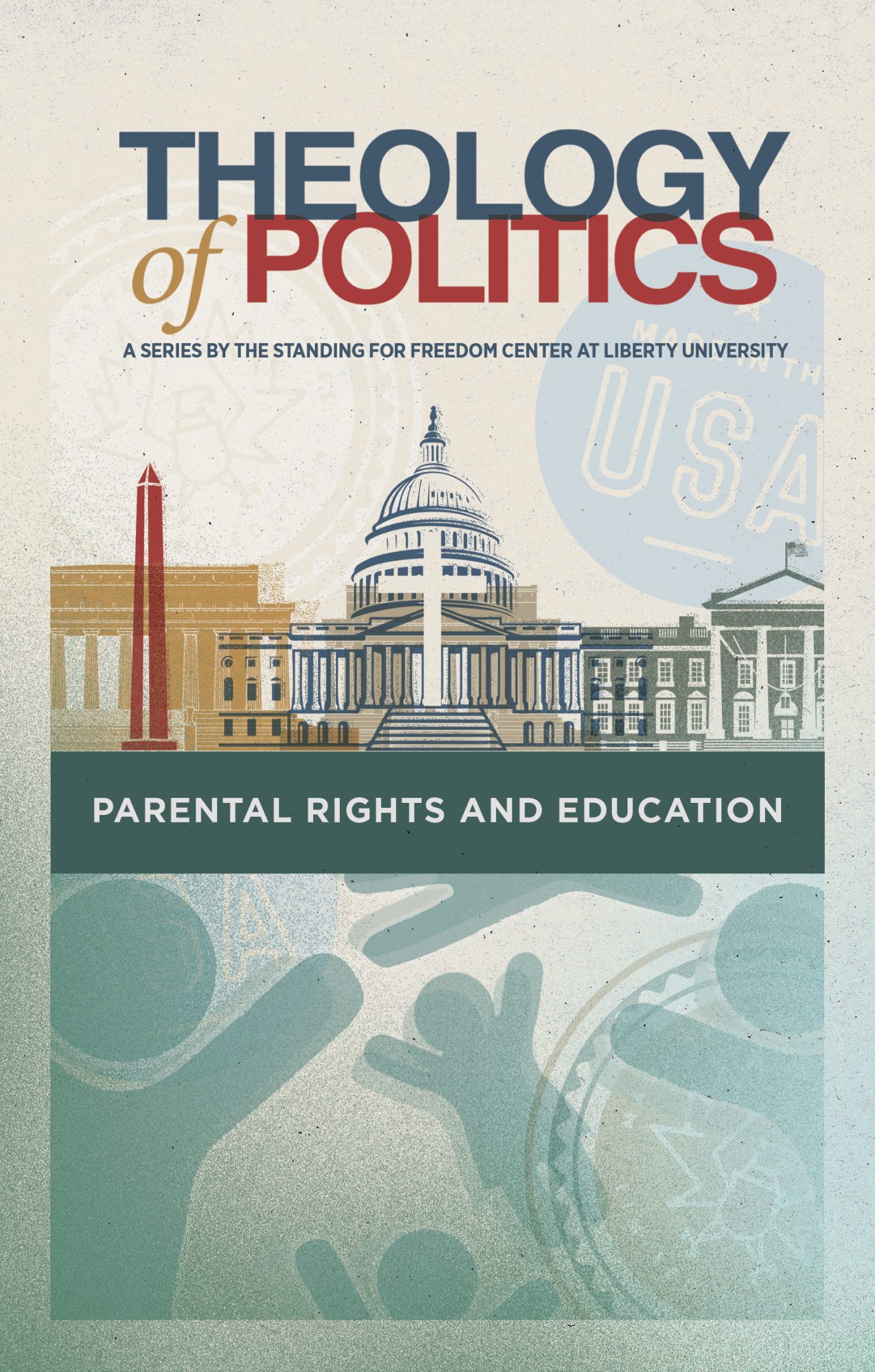


Get a free copy of Parental Rights & Education when you subscribe to our newsletter!

“The next time someone tells you, ‘Only God can judge me,’ you can confidently respond: ‘That’s not actually what Matthew 7:1 means.’ Perhaps then you can even explain it to them — using proper hermeneutics.”
–WILLIAM WOLFE
If you have ever had a theological argument with someone, you know just how fast it can get down to a disagreement about certain Bible verses.
Consider this most classic example: “Judge not, lest you be judged” (Matthew 7:1).
Many (mostly liberals) try to wield this passage as a “get out of jail free” card to avoid any moral judgment on their actions. But studious Christians know that’s not what it means at all. In context (and remember, context is king) it is clear that Jesus is teaching His followers not to be hypocrites and to mind their own sanctification — not that Christians cannot pass any moral judgments.
So how can we know what the Bible is really saying? That’s where the discipline of hermeneutics comes in.
Hermeneutics is the branch of knowledge that deals with interpretation, especially of the Bible or literary texts. It is, in essence, a quest for meaning and a method of interpretation.
And hermeneutics matters because we are all interpreters, whether we like it or not. Even reading is itself an act of interpretation. For example, when reading aloud, how do you decide where to place emphasis? If reading is an act of interpretation, how much more so when it comes to arriving at the actual meaning of a text, and particularly, a text of God’s Word?
Hermeneutics begins with the recognition that all texts have inherent meaning. The author of any given work of literature had a particular intention when writing and meant the text in a particular fashion. As readers, we don’t get to “give” the text its meaning, but rather we must allow the meaning to unfold from the text through the work of interpretation and exegesis (determining what the text is saying). The study of hermeneutics gives us the tools to do just that.
As Christians, we should strive to align our interpretation of a biblical text to the original authorial intent of the text. The goal is to arrive, as best we can, at the conscious-willed intention of the author.
With Scripture, however, there are two authors, aren’t there? As faithful Christians, we believe that God’s Word is inerrant and inspired. The human authors wrote under the inspiration of the Holy Spirit — that is, God Himself. Divine authorship means text can go beyond what the immediate author meant at the time when we set it in the entire theological context of the Bible.
Now, there are many bad interpretations of the Bible out there. In fact, most forms of false teaching come from bad interpretations. Consider the false “prosperity gospel” that promises health, wealth, and happiness in this life. It often comes from a bad reading of passages like James 4:2: “You do not have because you do not ask God.”
That’s why it’s so important to remember that this is God’s Word: The final standard and the source of our eternal hope. We want to be able to interpret Scripture well because the Bible is the revelation of God to man.
Amazingly, our God is a speaking God, and we are a listening people (or at we should be), who have been instructed to know God and teach Him to others. The only way we can do this well is by rightly understanding and applying the Bible. Which leads us to our next point in Hermeneutics 101: What actually is the Bible?
According to one theologian, “The Bible is a collection of writings that Christians consider uniquely inspired and authoritative. While it is one unified book, the Bible is also a compilation of sixty-six smaller books, or literary works.”
That’s right. The Bible is one cohesive book and yet 66 individual books, which vary greatly in length and genre. But all share the same essential message — the Gospel of Jesus Christ.
When interpreting the Bible, we must first remember that it is a literary item. The Bible is a book. It is not an instruction manual. It is a work of literature, and it must be read as such.
The Bible is also composed of various genres. Sound hermeneutics recognizes the importance of acknowledging the differences: Histories, wisdom literature, letters, narratives, apocalyptic prophesy, etc. Engaging each of these genres appropriately helps the reader interpret them rightly. For example, the Book of Proverbs is a collection of wisdom sayings. They are axiomatic and can sound like “promises,” or “it will always happen this way” statements, when in fact they are speaking to the regular occurrences of life.
But most importantly, as Christians go to read and interpret the Bible, we must remember that the Bible is God’s revelation of Himself to man. It is an inerrant, inspired, infallible record of “everything pertaining to life and godliness” (2 Peter 1:3).
When it comes to hermeneutics, context is king. Or, in real estate terms, what matters most here isn’t “location, location, location” but rather “context, context, context.”
For general hermeneutics, there are three important levels of context: Textual, Covenantal, and Canonical.
The textual level examines the facts on the ground, so to speak, of the text at hand. It asks what is in front of you, the reader, in that particular text and all its details. To employ the textual level of interpretation, the reader should make all the observations one can about that text. You want to look for the prominent things from the story. This level is not thinking about sermon points or how to get to Jesus from the text, but rather what is simply present in the text. It asks basic questions such as: Who are the characters? Where are we? And what prominent things are said? The textual level will contain far more specific details than would ever be included in a sermon or a Bible study.
The covenantal, or historical-covenantal, level, is the next layer of context. It builds upon the textual level of interpretation by asking this: What are some significant things to notice from this text when you set it in the particular covenantal context of the relationship between God and Israel? Here, you aren’t just looking for historical facts and figures, but those that are covenantally significant, or pertaining to the relationship between the Creator God and His chosen people, who He called out of Egypt to be a holy nation. At this level, the interpreter is more selective. There might be just one or two things to say that pertain to this level, but these serve as building blocks that lead to the canonical level.
The canonical level is the level at which you look at all of the redemptive history in the Bible and see the role the key elements of your text play in the biggest story of Scripture. This is where understanding the big picture of the Bible comes into play.
As we mentioned, the Bible is made up of 66 individual books, but it is also one cohesive book. It is a complete canon. And as such, there is a unifying theme that runs through all of Scripture. Sometimes this is called the “scarlet thread” of the Bible. The Big Picture of the Bible, in a nutshell, is this: the basic framework for biblical interpretation. It is the greatest story arc of all time, taking us from creation to consummation. There are more than a few different ways to break down or summarize the Big Picture of the Bible, but here are some:
To place your text in this highest level, the canonical level, consider where the passage you are interpreting fits into these “big picture” frameworks.
This article has provided you with a basic introduction to hermeneutics in general. As Ligonier Ministries explains,
“Knowing how to interpret Scripture correctly, therefore, is as important as knowing that the Bible is true. And since the Bible was written by authors with specific intents, the way to determine a text’s meaning is to discern the original author’s intent for it.”
There is a specific term for this method of faithful hermeneutics: the grammatical-historical method. As explained above, this method pursues the original intent of the author(s), recognizing that God worked through men to produce Scripture (2 Timothy 3:16-17), acknowledging different genres, and making sure to place a text in its right context — textually, covenantally, and canonically. We also must, as Ligonier exhorts, consider “the text’s grammatical structure. We treat verbs as verbs and nouns as nouns, for while the Bible is God’s Word, it is written according to normal grammatical conventions, not in some esoteric tongue.”
Now, the next time someone tells you, “Only God can judge me,” you can confidently respond: “That’s not actually what Matthew 7:1 means.” Perhaps then you can even explain it to them — using proper hermeneutics.
Follow William on Twitter! @William_E_Wolfe
Ready to dive deeper into the intersection of faith and policy? Head over to our Theology of Politics series page where we’ve published several long-form pieces that will help Christians navigate where their faith should direct them on political issues.

Notifications